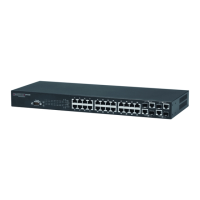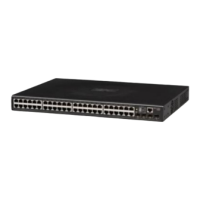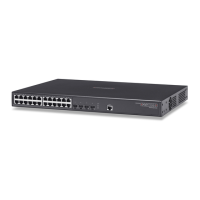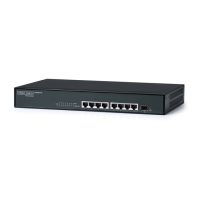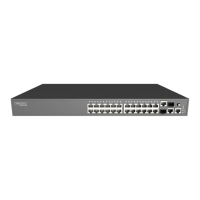C
HAPTER
1
| Introduction
Overview
– 24 –
Figure 2: Rear Panel
SWITCH ARCHITECTURE
The switch employs a wire-speed, non-blocking switching fabric. This permits
simultaneous wire-speed transport of multiple packets at low latency on all
ports. The switch also features full-duplex capability on all ports, which
effectively doubles the bandwidth of each connection.
This switch uses store-and-forward switching to ensure maximum data integrity.
With store-and-forward switching, the entire packet must be received into a
buffer and checked for validity before being forwarded. This prevents errors
from being propagated throughout the network.
NETWORK MANAGEMENT OPTIONS
With a comprehensive array of LEDs, the switch provides “at a glance”
monitoring of network and port status. The switch can be managed over the
network with a web browser or Telnet application, or via a direct connection to
the console port. The switch includes a built-in network management agent that
allows it to be managed in-band using SNMP or RMON (Groups 1, 2, 3, 9)
protocols. It also has an RS-232 serial port (DB-9 connector) on the front panel
for out-of-band management. A PC may be connected to this port
for
configuration and monitoring out-of-band via a
null-modem serial cable.
For a detailed description of the management features, refer to the Management
Guide.
